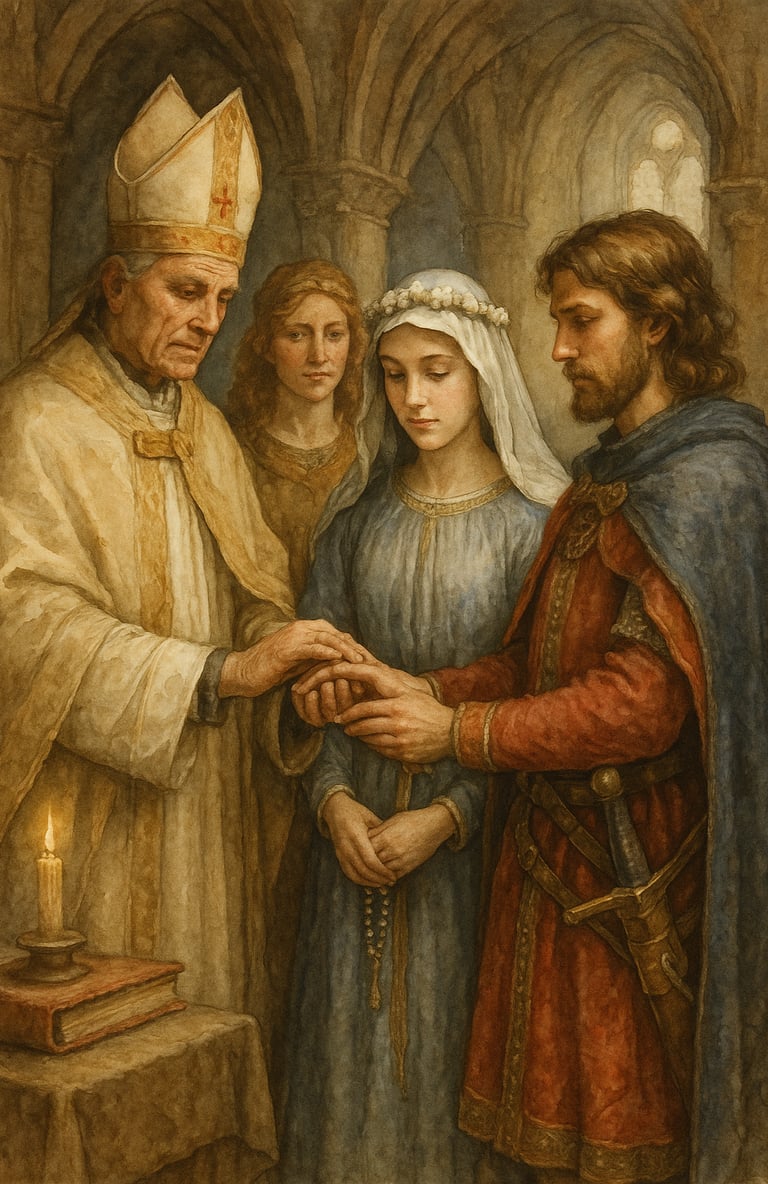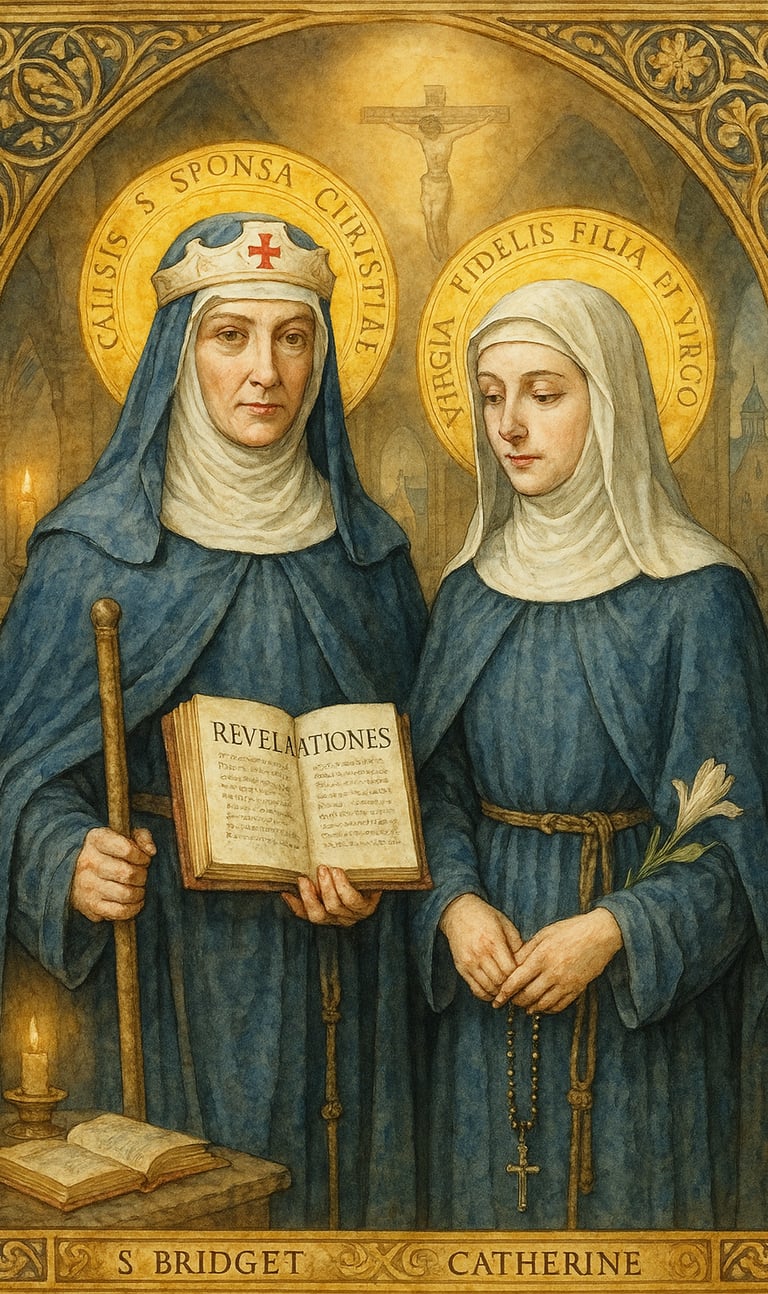St. Bridget of Sweden
Mystic, Mother, and Voice to a Broken Church
Halo & Light Studios
7/24/20253 min read


Click Link for a reel of Daily Dose of Saints and Faithful Art:
https://youtube.com/shorts/Nymt9SBR85M
“You, My daughter, must be like soft clay in My hands. I, who shaped man from dust, know well how to mold your soul if you let Me. What I want is not your greatness but your surrender. Not your eloquence, but your trust. My mercy is greater than your misery. My love is deeper than your wounds. Come to Me as you are, and I will make you into what you were created to be.” — Private revelation, paraphrased from Book 4
In an age ravaged by plague, scandal, and ecclesial decay, St. Bridget of Sweden (1303–1373) rose like a candle in the dark—illuminating Christ’s suffering, calling for repentance, and becoming one of the most powerful female voices in medieval Christendom.
Bridget was born into Swedish nobility under extraordinary circumstances. Before her birth, her mother nearly drowned—but was rescued by an angel who told her she was saved because of the holy child she carried. That child would go on to shake kingdoms and stir hearts across Europe.
Bridget was quiet as a toddler—she didn’t speak until age three. But when she did, her speech was astonishingly clear and eloquent. At age seven, she received a vision of a heavenly lady offering her a crown—a foreshadowing of the spiritual mission she would one day embrace. By ten, she saw Christ crucified, His wounds pouring blood. That image of the suffering Redeemer would become the anchor of her entire spirituality.
Though she longed for religious life, she obeyed her father’s wishes and married at thirteen to a nobleman named Ulf Gudmarsson. She poured herself into her family, raising eight children, including St. Catherine of Sweden, with love and discipline. Bridget was known for teaching her children to love God and care for the poor, and she extended this charity to fallen women in the village, whom she helped restore with dignity and compassion.
After Ulf’s death, Bridget embraced a life of penance, simplicity, and service. In the diseased and dying, she saw the face of the crucified Christ. Her charity wasn’t just philanthropy—it was mystical union. She and her daughter Catherine served the poorest of the poor, often in the most deplorable conditions, driven not by guilt but by love for the suffering Christ.
Then the revelations began. Jesus and Mary appeared to her often—offering visions of the Passion, of the state of the Church, and of the need for reform. These mystical experiences were compiled into the Revelations of St. Bridget, which became one of the most read devotional works in the later Middle Ages. In one particularly gripping vision, Mary recounts how she stood at the foot of the Cross and heard men mocking her Son as blood streamed into His eyes.
But what surprises many is this: despite her intense visions and the heavy crosses she bore, those who knew Bridget best remembered her smile. She was joyful, radiant, and filled with peace—proof that the mystic’s burden does not eclipse the saint’s joy.
Bridget’s courage took her far beyond Sweden. She walked across Europe to Rome, urged the Pope to return from exile in Avignon, and called kings and clergy to repentance with bold, motherly fire. In 1370, Pope Urban V approved her new religious order—the Bridgettines—a community of men and women under the leadership of an abbess, rooted in Eucharistic devotion and spiritual renewal.
She died in Rome in 1373. Her relics were returned to Vadstena Abbey by her daughter, and within two decades she was canonized. In 1999, Pope St. John Paul II declared her co-patroness of Europe, alongside Saints Benedict, Cyril and Methodius, Catherine of Siena, and Edith Stein.
St. Bridget of Sweden reminds us that the renewal of the Church begins not in palaces or politics, but in prayer, obedience, and love. She was a wife, a mother, a mystic, a reformer. And her light still burns in the heart of the Church today.
📅 Feast Day: July 23
🛡️ Patroness of Sweden, Europe, widows, the poor, and those suffering hardship


